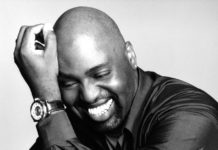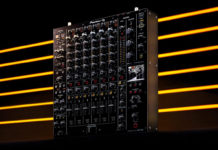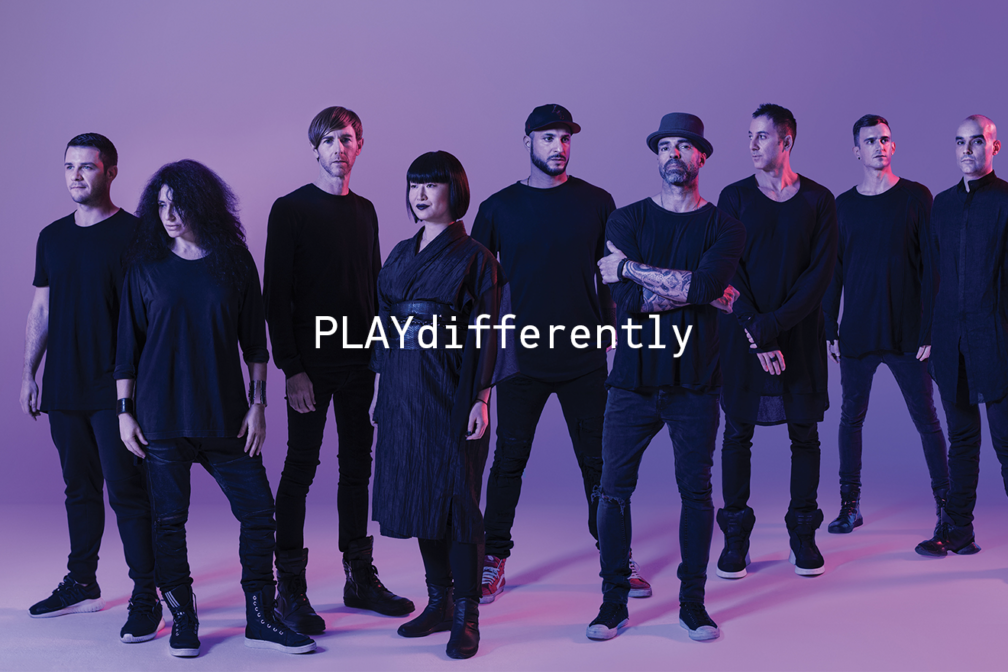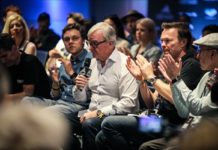Richie Hawtin, one of the most technologically innovative artists in electronic music, has been a key figure in the development of DJ technology for nearly two decades. Now he’s assembled a DJ super-team to represent his new mixer, the MODEL 1.

Richie has turned chasing technology into an art form. Not our words – though we wish we’d captured Hawtin’s modus operandi in such a succinct soundbite – but the words of one of Richie’s trusted friends, ENTER. resident and MODEL 1 ambassador, Hito.
“She’s too kind,” laughs Richie. “The real art form is what happens between man and machine, and the infinite ways machines can work differently for different people. The art is how we constantly unlock different ways to manipulate the machines and how our relationship with machines inspires us.”
Relationship: a key theme when it comes to the MODEL 1, a mixer he launched earlier this year, recruiting a crack team of kindred spirits to test it to its limits and showcase it around the world. The philosophy behind it is to make DJs evaluate their relationship with their craft, machines and crowd. There are also more personal relationships to consider, like the one between Richie’s father and Andy Rigby-Jones, the MODEL 1’s engineer and ex-Allen & Heath inventor behind the club standard Xone mixers, and how their paths crossed 16 years ago. Which is where the MODEL 1 story begins…
Rewind to 1999: a new paradigm for Richie. At the time his set-up comprised two turntables, a mixer, a 909 and an Ensonique DP/4 effects box. Then three things happened: he and John Acquaviva launched Final Scratch with Dutch tech company N2IT, the production/performance platform Ableton was released and Richie’s favourite studio mixer manufacturers Allen & Heath moved into the DJ sector with the Xone:62 – something that excited Hawtin so much he travelled to Frankfurt to see it unveiled at a trade show where he met Rigby-Jones for the first time.

These events would change how Richie would progress into the new digital century. Years before the ‘digital revolution’ in 2005/6 he was forecasting the future as a guest university lecturer and hosting talks about computer-based live music performance. Students listened keenly; the industry, not so much.
“People thought we were the devil!” he laughs. “Final Scratch kick-started a negative wave for the vinyl industry. This has to be noted. But the beginnings of digital DJing also helped bring on digital distribution for electronic music which, in my opinion, is the beginning of the explosion of electronic music as we see it today. We had to go beyond the secret record that only ten DJs had. We had to bring music closer to people.”
Performance-wise, during this time, Richie was getting closer to the music with the first version of Ableton running loops in his sets, five years before it started to become the norm. For Richie, Ableton had influenced a new way of thinking, best captured by his loop-fuelled ‘DE9 – Closer To The Edit’ album in 2002. But something was missing…
“I needed to bring the mixer closer to my fingertips,” says Richie. “So my dad and I took the Xone:62 apart and turned an audio channel into a MIDI channel. It was the first audio/MIDI hybrid mixer.”
Rigby-Jones and Allen & Heath welcomed the Hawtin & Son hack, sending over schematics. They too were beginning to understand the capabilities of the future. That was 2001; digital DJ performances were a reality, and Richie and Andy knew they’d have a long future working together.
“If there’s something I feel I need to get out of my head the first place I will look to realise that idea is technology,” he explains. “If it’s not there, and if I have the right people to help me, I’ll modify something to do it. That’s the DIY spirit the whole industry was founded on which, to me, is the heart and soul of techno: the future.”
Allen & Heath released the Xone:92; Richie and his father customised it. Final Scratch and Traktor merged to create Traktor Scratch; Richie helped to develop and popularise it. His 2005 album ‘DE9: Transitions’ saw him push Ableton even further into DJ discourse by breaking down hundreds of tracks and rebuilding them into new ones.
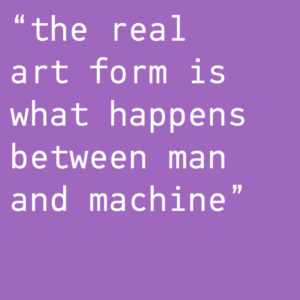
With each new development, the lines between playing and performing were blurring. His 2009 Livid Instruments controller CNTRL:R created even more dialogue between mixer and computer, allowing full control without having to look at a laptop. Meanwhile in 2010 his Griid application was one of the earliest to utilise iPads for performance.
“That was during the development of Plastikman Live,” he recalls. “I was controlling everything for that – audio, FX, lighting, everything. There was no way I could do all that on one controller so I wanted to incorporate the iPad.”
This thirst to control more and incorporate more and more technology reached a turning point during the development of his ENTER. concept. A live experience that featured an app (Smudge) which allowed you to interact with the event, it’s the one endeavour Hawtin would reconsider, in hindsight.
“The best nights and experiences are like hypnosis,” he explains. “The frequencies make you close your eyes and take you away, leading you into an alternate reality. We were giving people a reason to get their phones out and break away from that. I loved the interaction, but I question how it changed the focus of the experience.”
For Hawtin, the main mission now is to strip things back and create tools that enhance that alternate reality. To him, we’ve reached a point in tech where it’s not a case of working out what we need to find a solution, but deciding what we don’t need. Cue: MODEL 1. A mixer that, rather than featuring every possible bell or whistle, offers six channels to power whatever tools the DJ wants to use through some of Rigby-Jones’ most detailed, high-end audio spec to date, unique frequency-sculpting EQs and filters.
“I feel that with the glut of cookie-cutter mixers doing the same thing we are going down a precarious road, pushing a group of DJs and artists through a very similar pipeline,” he explains. “It’s great to have mixers with built-in effects, but the more flexible and modular our instruments are, the more opportunities we can create. I want artists using it to think about all the great nights they’ve had, all the things they’ve learnt about DJing and all their favourite records and ask, ‘How am I going to play these in a way that’s different to anybody else?’ It’s a mentality which, for me, is the base of the great DJ artisan.”
If the real art is in how we integrate with technology, the MODEL 1 is the biggest blank canvas Richie’s made so far. What’s interesting, he’s noticed, is how it’s influenced a change in style for him and his ambassadors. Rather than adding more tools, layers and complexities, it’s stripped back the technique. Liebing says he’s started to go a lot trippier with his blends, while Dubfire describes how it’s engaged him with the crowd again.
“It’s made some of us play slower and maybe only layer two things and just spend time using the mixer to manipulate,” says Richie. “That’s what I wanted to do: bring the focus back on the mixer as the main instrument. Right there in the middle. As it was for the pioneers who inspired me, as it will be for the pioneers who inspire the next generation as we move into the future. Which is, as I said earlier, where techno’s heart and soul lies.”
The future is where Richie’s heart and soul lies, too. As for the future of PLAYdifferently, he confirms that this is just the beginning. What seems important for him right now is not to add more noise to an already chaotic market but to only create something if there’s nothing else already filling that role. “Sometimes you want to create solutions. Other times you want to create possibilities,” he says. “But what we should never forget is the incredible synchronicity between DJ and crowd. Good DJs don’t just play the ten best songs you know them for, like a band at a gig. We’re watching and listening and moving with the crowd. We’re all on a trip together.”





